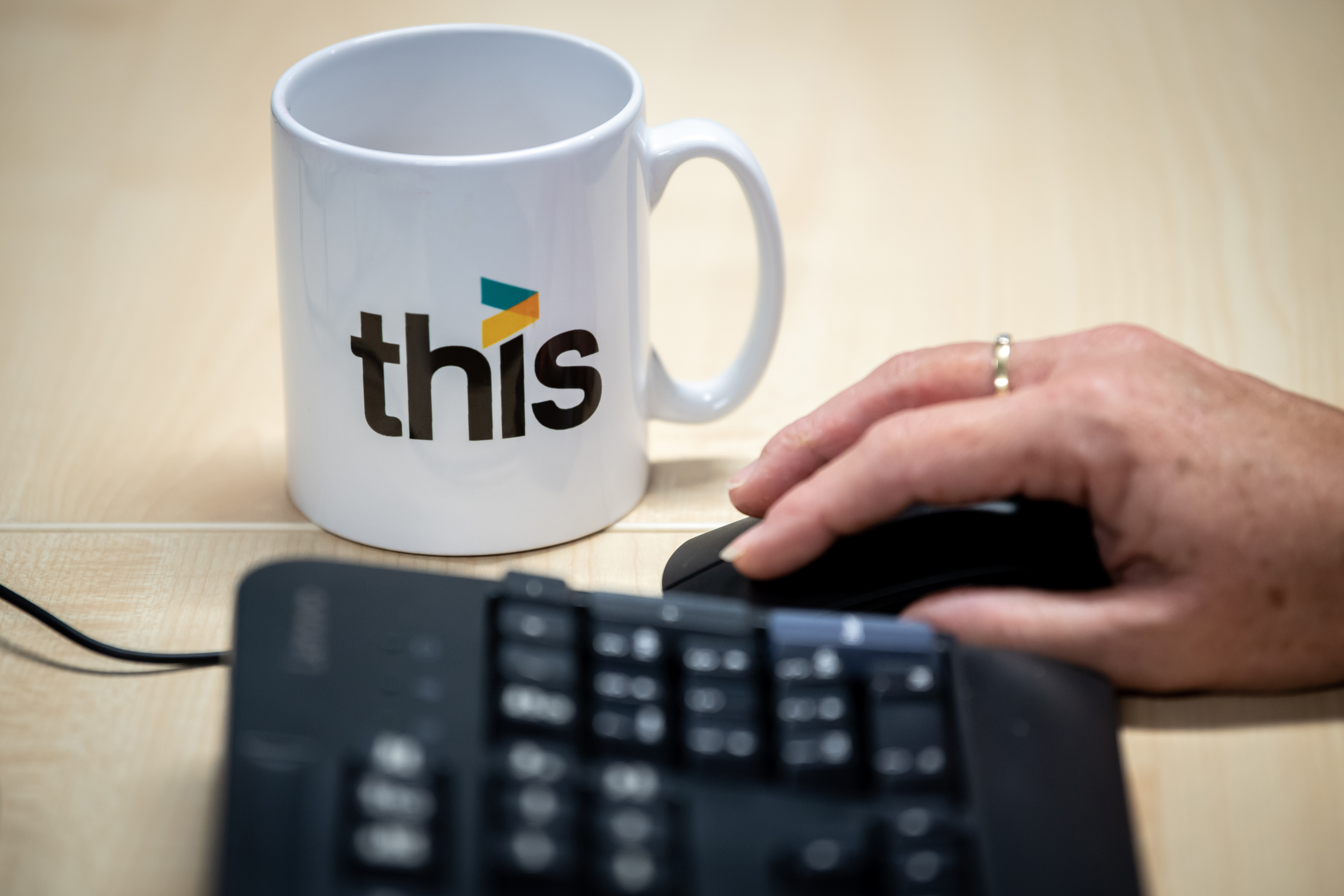Six million people – one in nine of the population - are on a hospital waiting list for treatment of some description, MPs learned, when Health Secretary Sajid Javid addressed parliament to unveil the government’s plan to tackle England’s backlog in care.
That number was likely to increase, he said, adding that waiting lists would not start falling for two years.
Statistics about our health and healthcare are a part of our everyday lives. The latest Covid-19 infections, hospitalisations and deaths - together with the latest figures for the covid vaccine and booster programmes -were a staple news item of almost every bulletin broadcast on TV and radio.
Whether it is a government minister or a TV newsreader, they are giving us headline statistics – the brim of an NHS well of information so profound it almost beggars belief such is the complexity of the data it can provide.
NHS data is just as capable of affording national perspectives to ministers as it is of knowing whether a patient leaving hospital needs help getting dressed at home the following morning.
This data is powered by health information - the blood that runs through the NHS veins, while health information technology provides the veins it runs through. Together they create health informatics, which combines the intelligent use of information and technology to provide better care for patients.

Data in a digital age
The Information Services teams at The Health Informatics Service (THIS) provide approximately 200 mandatory reports on a plethora of focuses to the NHS every month on behalf of its host trust, the Calderdale and Huddersfield NHS Foundation Trust (CHFT). They are all subject to deadlines and some are compiled daily, some weekly, and a handful monthly.
The Urgent Emergency Care Situational Report provides a fine example of health information management in action. THIS provides one report for each CHFT hospital, and each report contains about 100 lines of information, such as:
- Bed occupancy
- Bed closures and the reasons,
- How many intensive care beds are occupied and for what reasons
- How many patients attended the hospital the previous day
- How many A&E patients breached the four-hour standard to be seen,
- How many emergency admissions took place.
Julian Bates is THIS’s Director of Information. He says:
“As little as ten years ago, the Urgent Emergency Care Situational Report contained about 20 lines of focused information and we submitted it weekly. Now in this digital age, it is five times bigger and has to be submitted by 11am each day, reporting on the previous day. These reports from NHS trusts all over the country form part of the information that reaches the nation and feed into the NHS itself to paint the current picture, pressured or otherwise, within the service.”
“That is just one example. There are several others, such as covid patient occupancy status, waiting lists and referral to treatment times. The NHS is getting more and more complex and there is more we are learning all the time.”
Creating a data highway
If arteries push blood to the heart, and veins carry it away again, then health informatics and information management act in very much the same way to keep the NHS heart pumping.
One of the best examples of the data highway is CHFT’s Medical Iinteroperability Gateway (MIG), which makes vital GP, social care and community healthcare patient data available to hospital and other clinicians, increasing efficiency and improving care quality.
Designed to connect otherwise incompatible systems, the MIG plugs the gaps when patients admitted to hospital can’t provide medical and other historical details, providing patient data that ranges from demographics and diagnoses to social care plans, allergies, recent procedures, therapies and tests. That means the Emergency Department (ED) and other acute clinicians can make informed treatment decisions faster, preventing unnecessary hospital admissions and duplicated tests.
In fact, interoperability is the key to all data collection and dissemination. Information is collected and stored in data warehouses where it can be analysed and then fed back into business intelligence systems that allow users to gauge performance.
An example of this is CHFT’s internal performance management framework, which contains more than 200 indicators and quality measures that help healthcare professionals understand how their particular division is performing.
CHFT has four main clinical divisions – surgical, medicine, women and children, and community services. THIS’ employs expert analysts for each division to provide bespoke management performance analysis.
Much of the data is now fed into simple, intuitive self-service business intelligence platforms and that information is complemented by data collected by other teams collating sickness data and workforce information, such as new starters and leavers.

Clinical coding
Patients arrive at hospital in different ways – it could be a referral from a GP, via an emergency ambulance, through A&E, or they’ve been on a waiting list for elective surgery.
All admissions are captured on the Enterprise Patient Record (EPR) system and are clinically coded. Clinical coders are trained and qualified to interpret clinical notes which enables them to apply clinical codes relating to each individual diagnosis and procedure during a patient’s admitted treatment.
Clinical coding is used for a variety of reasons but ultimately it is essential to ensure an accurate reflection of the patient’s condition and treatment is captured. This coding can then be used for research, understanding patient and/or illness trends, and for tracking and understanding costs.
Julian Bates:
“A lot of staff don’t realise how much difference they make to patient care because they’re not at the sharp end, but it is such a complex business that without the information, the coders and the IT – if IT goes down we are in a sticky situation – so it all has to work together. Everybody in the NHS has an important role to play whatever they are doing.”
Along came Covid…
The well established routines of health informatics and information management were thrown into disarray when the Covid-19 Pandemic struck in 2020, prompting fears over the strain it would impose on the NHS.
It was a steep learning curve for Julian and his team. He says:
“When I say the NHS is getting more complex, there is more and more to learn all the time. When Covid came along, literally overnight, we were finding out about pathology testing and how you prove that a patient has Covid, linking that to the patients in the hospital.
“We submit a Covid return for each site every day, including weekends, detailing how many patients are in the hospital with Covid, how many are getting provided with non invasive ventilation, whether they are in intensive care, and a whole lot more information that accompanies them right down to their ethnicity. (Reports in the first wave of the pandemic showed that some ethnic groups were more seriously affected by covid than others).
“It is invaluable information in terms of informing the government how the NHS is performing and where the pressures are in the system.”

Tackling health inequality
Health information management and technology are befitting of the chicken and egg cliché. One doesn’t exist without the other.
And while that applies to all the work done by THIS’ information services teams, one of the best examples is the data compiled on health inequalities.
Rob Birkett, THIS’ Director of Digital Services, explains:
“This is about data aggregation and how we pull all the data sets together. We’ve had to do a lot of groundbreaking work about how we pull GP and social care data into our clinical system and push our data into theirs.
“So, as an example, a clinician working in A&E might receive a patient who’s unconscious. A few years ago, that clinician wouldn’t have had a clue about that patient’s GP record, whether they’re on meds, say. But because of the work we’ve done that clinician now has access to the patient’s GP and any other relevant records to get a full clinical history.
“Equally, when a patient has been through the hospital system and is being discharged, they can see what social care provision is in place and any other important facts. It really ensures a safe discharge.”
The data has also been used to analyse patient illnesses and outcomes by postcode, it can spot trends by ethnicity – as it did with Covid-19 – or identify factors such as learning disabilities.
Predictive analytics
Predictive data analytics assists health organisations to enhance care for patients, improve outcomes and cut costs with predictive modelling about when, how and where care should be provided.
Through effective analysis of historical and statistical data, it’s possible to forecast requirements for emergency care, such as identifying and tailoring the best treatment plan for specific ailments when patients arrive at A&E. In the same way, it can also help to forecast and mitigate against critical conditions in patients such as heart failure and septic shock, when a dangerous drop in blood pressure can lead to breathing problems, organ failure or strokes.
Harnessing data for predictive analytics allows healthcare organisations to proactively improve patient health by working to reduce hospital readmissions, predict the need for additional care and help to effectively schedule resources based on more-accurate predictions of how long different types of patients are likely to require them.
The benefits of predictive analytics and the data it employs go further than individual patients. It is also offers a significant advantage to organisations responsible for management of mass public health trends, improvement programmes and health emergencies, such as epidemics or the Covid-19 pandemic.
Julian Bates:
“Predictive analytics is developing all the time. Some work we’ve done recently analysed patients coming into A&E and because of all the data we now have, we can predict with 90 per cent accuracy whether they will be admitted to hospital or sent home.
“We’ve done another piece of work looking at the mortality of patients. Based on what information has been captured about their stay in care, we can predict mortality rates to quite an accurate level. We speak to clinicians regularly to get ideas how predictive analytics can help them.”
THIS’ role in healthcare organisations
While much of THIS’s work is centred on its host trust, it provides a host of services to other clients, including:
Rob Birkett:
“We’ve developed from being a support function to absolutely underpinning clinical decision making and clinical delivery ingrained in patient care. And that's a big step forward.
“We work with about 50 clients, with a core of 10 taking the bulk of our services. We’re in a really unique position in terms of delivering across an array of services. For example, we know as much about GP systems as we do about a radiology department. There's not many other organisations in that position and as the NHS landscape shifts towards system-based outcomes and system-based working, that's already our mindset.”
Health information management technology
The health information management technology innovations put in place by THIS has seen its host trust jump from 150th to one of the most digitally mature trusts in England.
“I remember when I first joined the NHS, if you had a robust infrastructure you were at the top of the tree in terms of delivering into NHS healthcare. That’s now a given, it’s not talked about any more,”
says Rob. He adds:
“Health Information Management and Health Information Technology are two separately definable areas, but one can't exist without the other. So while there's a divide somewhere, where it stops being technology and starts to become information management, it’s difficult to say.
“There would be nothing for technology to deliver if it wasn't delivering systems access, whether that's an email or a patient record. It's just delivering data to someone’s screen to help them make a decision. On the information management side, you can’t do any of that without it being able to seamlessly and reliably get to the place where it's needed because of the power behind it,”
Technology delivering healthcare
The merger of infrastructure and applications is now able to play a key role in providing healthcare. One of the most obvious examples is virtual appointments, where a patient can see their GP or attend an outpatient appointment without going to the surgery or hospital.
Countless systems feed into data gathering, warehousing, analysis but the most expansive is the Electronic Patient Record (EPR). Its breadth and depth is so extensive it is seen as the trust’s source of truth on every detail of patient care.
Rob Birkett says:
“We we've moved from an in-house system to a big global product called Cerner Millennium. Some trusts will have a ‘best of breed’ approach and there’s some others trusts still on the journey to an EPR in line with NHSX timelines . But in the next five to ten years every trust will have a big EPR that will run the bulk of their healthcare systems.
“We have numerous other systems that feed into the EPR, for example, diagnosic results. The patient journey can span a number of organisations at place level as well as the wider integrated care system. Each of these organisations have their own solutions and associated patient data sets. Through our integration work we have enabled these data sets to be viewed via our EPR in context, in real time, and in the clinicians’ system of choice. We’ve also developed a similar view the other way for GPs, community and social care colleagues.”
Technology in action
Anyone of a certain age who has spent time in hospital will remember the chart kept in a holder at the foot of the bed where the clinician would place the patient record clipboard.
But in a digital age, clinicians are more likely to be seen with a handheld tablet, or a mobile computer, on which observations and records are typed straight into the EPR. It’s real time and there’s no transcription errors.
One of the best examples is our work with Zebra handheld computers. These devices were originally used for scanning patient and medicine bar codes to ensure the right people were receiving the right treatments. They're now being used for additional purposes such as Teams for patients to connect with relatives – invaluable during the pandemic - and updating records in real time at the bedside.
And it’s not just hospitals taking advantage of the digital age. End user technology means patients can be monitored at home – blood pressure monitors are a good example of this. Wearable technology is also coming into use that will continually monitor a patient’s observations and feed the data back to the hospital.
Rob Birkett:
“All of this is supported by project managers, who're helping implement the technology, and clinical trainers and change specialists helping to embed the use of the technology. It also involves the whole range of informatics services, such as information governance, cyber security, registration authority, web development and benefits realisation, supporting the end-to-end process; there’s a whole range of informatics services that undererpins all the systems and applications. All of that, in its entirety, makes up that healthcare technology.
“It is so broad in its range of deliverables it's unbelievable. It’s not until you consider that, you realise everything we are doing is much bigger than we sometimes realise.”
Contact THIS
Great relationships represent a key ingredient to successful healthcare outcomes and collaborative work.
We’re great listeners and trusted advisers. We build excellent relationships between all the diverse stakeholders we work with.
Our NHS clients include London’s Great Ormond Street Hospital and hospital trusts in Southampton, Oxford, Cambridge, Nottingham, Derby, Birmingham, Liverpool, Manchester, Middlesbrough, North Tees & Hartlepool, Newcastle Upon Tyne, Edinburgh, Lanarkshire and Glasgow.
Visit our Microsoft Office Specialist Certification service page to find out more.
Contact us for more information.

Subscribe to Informatics Insights & Advice
Take advantage of the latest news and information from The Health Informatics Service. Read about our innovative work with healthcare clients across the UK and get our expert insights and recommendations to help and inspire your work.

